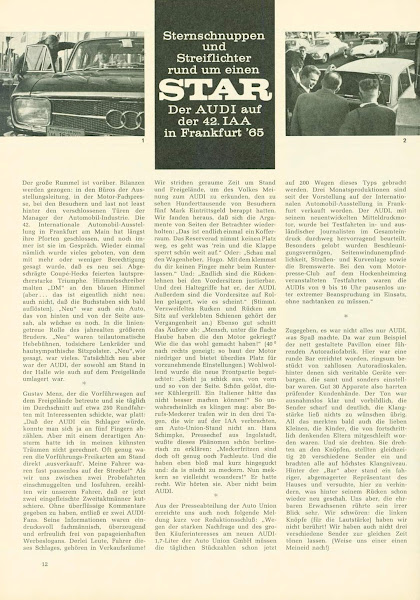





Auto-Union had a well mannered, contemporary styled family sedan in the DKW F102 but the car's two-stroke engine suffered a poor reputation. While DKW's engineers were working on a replacement fuel injected two-stroke engine, the company executives were looking for a stop gap. Mercedes-Benz were the majority stakeholders at the time and they provided a medium compression four cylinder engine to Auto-Union. The new engine was fitted into the F102 body as a trial. This required canting the engine over by a few degrees to fit into the engine bay.
By the time the car, designated the DKW F103, was ready for production, Mercedes-Benz had sold its share in Auto-Union to Volkswagen. Wanting to make a break from DKW's two-stroke legacy, the new Auto-Union board decided to retire the DKW brand name and revived the Audi brand. The new car went by a few different designations - Audi F103, Audi 75, Audi 80 and Audi 90, depending on the horsepower of the engine.
The story of the DKW F102 https://dkwautounionproject.blogspot.com/2019/04/1965-dkw-f102.html







































































